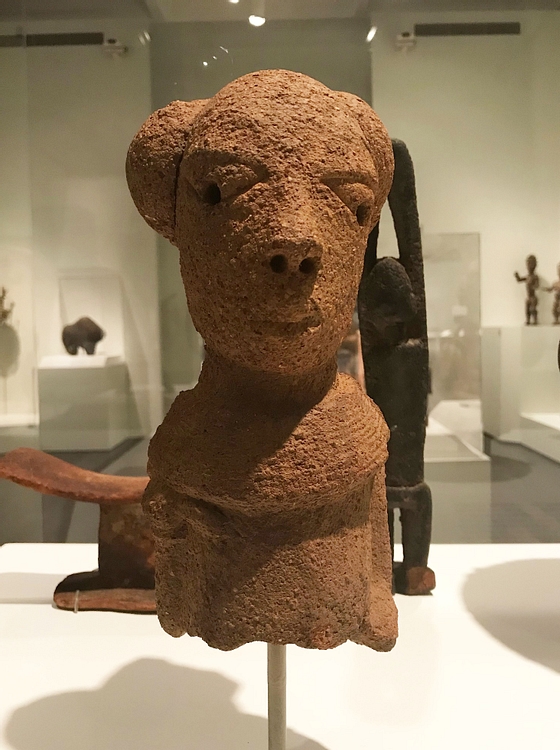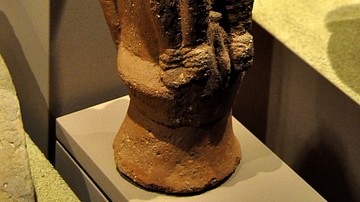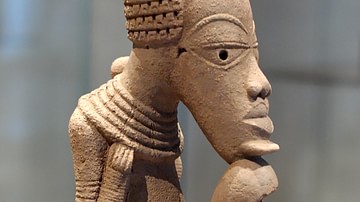Illustration
As a result of erosion and mining, one of the oldest and most sophistcated art-producing cultures known in sub-Saharan Africa came to light in the mid-20th century. Hundreds of hollow figures, heads, and fragments made of coarse clay have been found in three sites near Nok in central Nigeria—an origin enshrined in the art historical name for these objects—and have been scientifically dated from 500 BCE-200 CE. This piece comes from Kaduna State in central Nigeria and is made of terracotta. It dates from 200 BCE-200 CE. (Iris & B. Gerald Cantor Center for Visual Arts at Stanford University, Stanford, California)
About the Author
Cite This Work
APA Style
Wiener, J. B. (2018, January 16). Nok Culture Fragment of a Figure. World History Encyclopedia. Retrieved from https://www.worldhistory.org/image/7935/nok-culture-fragment-of-a-figure/
Chicago Style
Wiener, James Blake. "Nok Culture Fragment of a Figure." World History Encyclopedia. Last modified January 16, 2018. https://www.worldhistory.org/image/7935/nok-culture-fragment-of-a-figure/.
MLA Style
Wiener, James Blake. "Nok Culture Fragment of a Figure." World History Encyclopedia. World History Encyclopedia, 16 Jan 2018, https://www.worldhistory.org/image/7935/nok-culture-fragment-of-a-figure/. Web. 28 Jun 2025.








